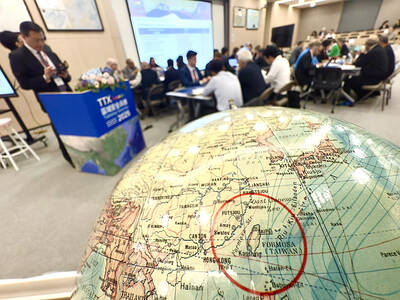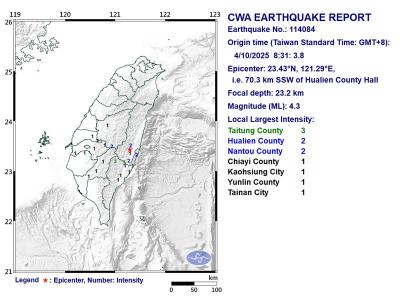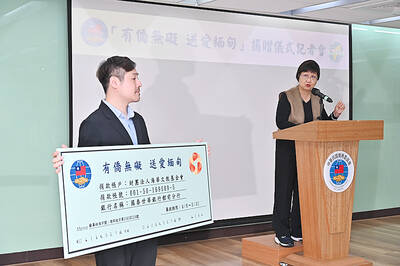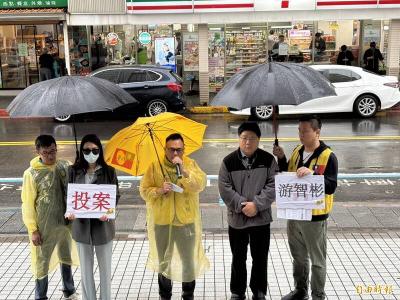Although the Ministry of National Defense and some Chinese Nationalist Party (KMT) legislators played down the significance of an incident involving two Chinese fighter aircraft in the Taiwan Strait late last month, analysts say the matter is more than simply routine.
Confirming on Monday media reports that one of two Chinese Sukhoi-27 fighter aircraft shadowing a US U-2 spy plane had crossed the median line in the Taiwan Strait on June 29, ministry officials maintained this was an isolated incident and did not regard it as provocative.
The Chinese aircraft are believed to have been from the 40th Fighter Regiment, 14th Fighter Division at Nanchang-Xiangtang Air Base in Jiangxi Province.
Although the intrusion — reportedly the first since an April 1, 2001, mid-air collision between a US Navy EP-3 aircraft and a Chinese J-8 fighter — prompted the ministry to dispatch two F-16s to intercept the Chinese fighters, KMT legislators said Beijing would not seek to provoke Taiwan at a time when relations in the Taiwan Strait are “at their best in decades.”
KMT Legislator Herman Shuai (帥化民), for one, said the incident was likely the result of pilot error.
A US Department of Defense spokesperson confirmed to the Taipei Times on Tuesday that a U-2 aircraft from the US Air Force was conducting a routine operation in international airspace in the area of the East China Sea on June 29.
As a matter of policy, the US official would not discuss details of specific missions or operations.
“In general, these reconnaissance flights are conducted in international airspace, as are the People’s Republic of China intercepts, which happen fairly routinely,” the spokesperson said. “There is no ‘repel’ aspect to them.”
US Pacific Command (PACOM), which has operational control of the surveillance flights, also confirmed the information.
A PACOM official contacted for comment said it would be inappropriate to speculate on the reasons why Chinese aircraft crossed the centerline in this particular incident.
Beijing has repeatedly called on Washington to cease the surveillance flights, claiming they infringe on its sovereignty and since 2007 China has frequently dispatched fighter aircraft close to the median line when such US surveillance flights occurred.
Asked to comment on the significance of last month’s incident, Roger Cliff, a specialist on the Chinese air force at the Project 2049 Institute, said it was more provocative than Taipei let on.
“Unless China has frequently done so in the past, which I doubt, crossing the centerline to shadow a U-2 is rather provocative,” he said. “I can’t think of any reason why China would start to do that at this particular time, but Beijing does regularly complain about intelligence and reconnaissance activities conducted against it, even when they are conducted in international waters or airspace. It is getting more assertive in its efforts to prevent them.”
Whether this was an isolated incident or another sign of China’s growing assertiveness, Taiwan should take this very seriously, Cliff said.
“Taiwan wouldn’t want the regularity with which such incidents [could] occur to cause them to stop responding. One day it might not be a probe, but rather the beginning of an actual attack on Taiwan,” he said.
Less alarmed by the incident was Gary Li, an intelligence analyst at UK-based Exclusive Analysis.
“The PLAAF [People’s Liberation Army Air Force] guys didn’t really do anything too aggressive, with one of them straying over the line for a little while,” he said, cautioning, however, that this could just be the agreed report given by both sides to avoid escalating the situation.
Asked to comment on the reasons why, barring pilot error, the PLAAF would have allowed one of its aircraft to cross the median line at this particular point in time, Li offered a number of possibilities, starting with the position that China would not have made the decision to violate the centerline lightly.
“Beijing could be sending a message to the US in light of the developments in the South China Sea by harassing their routine intelligence assets” in a matter reminiscent of the “harassing” of the USS Impeccable, a US naval survey ship, by five Chinese vessels off Hainan Island in March 2009, he said.
Another possibility, Li said, was that the U-2 was gathering intelligence that was highly sensitive — perhaps new missiles being deployed or new naval assets — which could have forced the Chinese to be more daring than they normally are.
It could also be that the frequency of surveillance missions by the US has recently increased, he said.
“Even though U-2 flights are routine, they still can monitor inland intelligence due to their altitude. So the argument that they were in international airspace doesn’t really mean much to the Chinese as far as intelligence preservation is concerned,” he said.
Li speculated that the two PLAAF aircraft were not Su-27s, but rather J-11s, as the 17,500m ceiling of the aging Su-27 would make it hard to threaten the high-altitude U-2, which usually operates at about 21,000m.
The J-11, a Chinese variant of the Russian-made Su-27, has an operational ceiling of 18,500m and is equipped with medium-range air-to-air missiles. Nanchang-Xiangtang Air Base has both Su-27UBK and J-11 aircraft.
If this was the case, the PLAAF may have wanted to demonstrate to the US that China now has the capability to threaten its high-altitude assets, Li said.

DEFENSE: The National Security Bureau promised to expand communication and intelligence cooperation with global partners and enhance its strategic analytical skills China has not only increased military exercises and “gray zone” tactics against Taiwan this year, but also continues to recruit military personnel for espionage, the National Security Bureau (NSB) said yesterday in a report to the Legislative Yuan. The bureau submitted the report ahead of NSB Director-General Tsai Ming-yen’s (蔡明彥) appearance before the Foreign and National Defense Committee today. Last year, the Chinese People’s Liberation Army (PLA) conducted “Joint Sword-2024A and B” military exercises targeting Taiwan and carried out 40 combat readiness patrols, the bureau said. In addition, Chinese military aircraft entered Taiwan’s airspace 3,070 times last year, up about

A magnitude 4.3 earthquake struck eastern Taiwan's Hualien County at 8:31am today, according to the Central Weather Administration (CWA). The epicenter of the temblor was located in Hualien County, about 70.3 kilometers south southwest of Hualien County Hall, at a depth of 23.2km, according to the administration. There were no immediate reports of damage resulting from the quake. The earthquake's intensity, which gauges the actual effect of a temblor, was highest in Taitung County, where it measured 3 on Taiwan's 7-tier intensity scale. The quake also measured an intensity of 2 in Hualien and Nantou counties, the CWA said.

The Overseas Community Affairs Council (OCAC) yesterday announced a fundraising campaign to support survivors of the magnitude 7.7 earthquake that struck Myanmar on March 28, with two prayer events scheduled in Taipei and Taichung later this week. “While initial rescue operations have concluded [in Myanmar], many survivors are now facing increasingly difficult living conditions,” OCAC Minister Hsu Chia-ching (徐佳青) told a news conference in Taipei. The fundraising campaign, which runs through May 31, is focused on supporting the reconstruction of damaged overseas compatriot schools, assisting students from Myanmar in Taiwan, and providing essential items, such as drinking water, food and medical supplies,

New Party Deputy Secretary-General You Chih-pin (游智彬) this morning went to the National Immigration Agency (NIA) to “turn himself in” after being notified that he had failed to provide proof of having renounced his Chinese household registration. He was one of more than 10,000 naturalized Taiwanese citizens from China who were informed by the NIA that their Taiwanese citizenship might be revoked if they fail to provide the proof in three months, people familiar with the matter said. You said he has proof that he had renounced his Chinese household registration and demanded the NIA provide proof that he still had Chinese